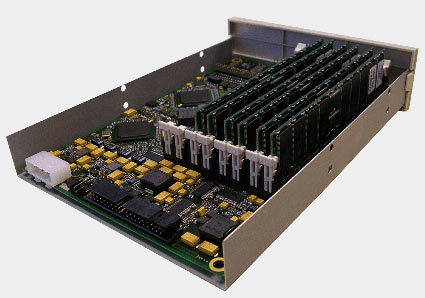A New RAM Hard Drive from HyperOs
Conclusion
As the benchmark results show, the Gigabyte i-RAM is still clearly better at delivering better bandwidth thanks to its faster Serial ATA interface, compared to the HyperDrive. The i-RAM delivers 126 MB/s vs. only 87 MB/s with the HyperDrive III. Also, while the effective transfer rates of hard drives decrease from the outside to the inner sections of the rotating platters, the throughput of solid state solutions remains the same, so that both of these solid state drives are still much faster solutions compared to a Western Digital Raptor, for example.
Looking at our I/O benchmarks, the i-RAM again is faster by around 50% compared to the HyperDrive. Storing database files on the solid state i-RAM drive is faster as well. I/O operations are at least 35 to 50 times higher with solid state drives versus conventional hard drives.
Needless to say the HyperDrive III has its advantages, since it fits conveniently into a 5.25" drive bay and also will host up to 16 GB of memory. And it almost goes without saying that any serious user will definitely need to run a UPS in order to provide a backup power supply for the HyperDrive.
The upcoming HyperDrive III version will feature both UltraATA and Serial ATA interfaces. This likely will improve its performance characteristics and help to beat the i-RAM in every aspect besides its pricing. While you can get an i-RAM for around $200, the HyperDrive will be at least $700. In exchange, it is more flexible and offers the optional backup software, making the whole solution more professional.
Get Tom's Hardware's best news and in-depth reviews, straight to your inbox.

Patrick Schmid was the editor-in-chief for Tom's Hardware from 2005 to 2006. He wrote numerous articles on a wide range of hardware topics, including storage, CPUs, and system builds.
